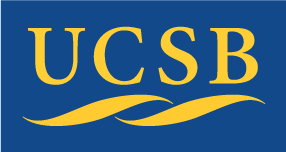|
Geometry, Topology, and Physics Seminar, Winter 2017
Part of the NSF/UCSB ‘Research Training Group’ in Topology and Geometry
Organizers:
Dave Morrison and
Zhenghan Wang.
Meets 4:00 - 5:30 p.m. Fridays in South Hall 6635.
In and Around 3D Quantum Gravity.
3D pure quantum gravity with negative cosmological constant serves as a toy model for the conceptual understanding of quantum gravity and suggests the profound "volume conjecture". This quarter, the seminar will focus on three salient features of 3D pure quantum gravity with negative cosmological constant:
- The relation between 3D gravity and Chern-Simons gauge theory, especially the subtlety about invertibility of vielbeins.
- The existence of BTZ (Bañados-Teitelboim-Zanelli) black holes.
- The asymptotic Virasoro algebra discovered by Brown and Henneaux, which is a precursor of the AdS/CFT correspondence.
The goal is to gain a better understanding of those facts, rather than present original research.
Here are three key references:
- E. Witten, (2+1)-Dimensional Gravity as an Exactly Soluble System,
Nucl. Phys. B 311 (1988) 46-78.
- M. Bañados, M. Henneaux, C. Teitelboim, J. Zanelli, Geometry of the (2+1) black hole, Phys. Rev. D 48
(1993) 1506-1525; Erratum, Phys. Rev. D 88
(2013) 069902; arXiv:gr-qc/9302012.
- J. D. Brown and M. Henneaux, Central Charges in the Canonical Realization of Asymptotic Symmetries: An Example from Three-Dimensional Gravity,
Comm. Math. Phys. 104 (1986) 207-226.
Other Quarters: [
Fall, 2021;
Winter, 2020;
Fall, 2019;
Spring, 2018;
Winter, 2018;
Fall, 2017;
Spring, 2017;
Wnter, 2017;
Fall, 2016;
Spring, 2016;
Winter, 2016;
Fall, 2015;
Spring, 2015;
Winter, 2014;
Fall, 2013;
Fall, 2012;
Fall, 2011;
Winter, 2011;
Spring, 2010;
Winter, 2010;
Fall, 2009;
Spring, 2009;
Winter, 2009;
Fall, 2008;
Spring, 2008;
Winter, 2008;
Fall, 2007;
Spring, 2007;
Winter, 2007;
Fall, 2006
]
| January 13 |
No meeting.
|
| January 20 |
Zhenghan Wang (Station Q and UCSB)
Audio [ mp3, m4a ]; Lecture notes.
|
| January 27 |
Matt Brown (UCSB)
Abstract:
I will give an exposition of the classic paper of Witten titled above.
In particular, I will show that 2 + 1 pure Einstein gravity is classically a Chern-Simons theory and canonically quantize it in the case of zero cosmological constant. Time permitting, I will say a few words about the state of affairs for $\Lambda \neq 0$ and the relation of the $\Lambda < 0$ case to the AdS/CFT correspondence.
Audio [ mp3, m4a ]; Lecture notes.
|
| February 3 |
Dave Morrison (UCSB)
LECTURE CANCELLED.
|
| February 9 |
Matt Hastings (Microsoft Research)
Note unusual day, time, and location: Thursday at 3:30 in Elings
Hall 2250.
Abstract:
Quantum error correcting codes are closely related to homology theories, and tools
from topology are very useful in constructing quantum error correcting codes.
One of the major problems in quantum error correcting codes is to construct codes
with large distance and with low weight parity check operators, two concepts that
I will explain in this talk. This question is closely related to the question of
$Z_2$ systolic freedom. The current state of the art results for quantum codes are
much worse than those for classical codes, with the two best results being due to
Freedman, Meyer, and Luo using a family of 3 manifolds with varying topology, and
due to Bravyi and Hastings, combining the idea of a product of chain complexes with
randomized constructions from coding theory. In this talk, I will outline a
possible way to obtain close-to-optimal results, using codes based on a family of
high-dimensional tori. The main technical results will have to do with Rankin
invariants of random lattices. The conjectured code distance depends on a
geometrical conjecture: roughly, that for the torus $R^n/\Lambda$, with $\Lambda$ a
lattice, using the Euclidean metric, the least area representative of nontrivial
$Z_2$ homology is a hyperplane (or at least does not have area super-exponentially
smaller than a hyperplane).
|
| February 17 |
No meeting
|
| February 24 |
Alexei Kitaev (Caltech)
Abstract:
The talk will cover a toy model of a quantum black hole and show how sl(2,R) conformal
symmetry emerges from a system of fermions.
Audio [ mp3, m4a ]; Lecture notes.
|
| March 3 |
Chao-Ming Jian (KITP and Station Q)
Abstract:
In this talk, I will review the paper by Brown and Henneaux titled above. I will cover the Hamiltonian formalism for Einstein gravity and the notion of asymptotic symmetry. In particular, I will show how the 3 dimensional gravity yields a non-trivial central extension of the asymptotic symmetry algebra.
Audio [ mp3, m4a ]; Lecture notes.
|
| March 10 |
No meeting
|
| March 17 |
Differential Geometry Seminar: 3:00 p.m.
Dave Morrison (UCSB)
Degenerations of K3 surfaces, gravitational instantons, and M-theory
Abstract:
The detailed study of degenerations of K3 surfaces as complex manifolds goes back more than forty years and is fairly complete. Much less is known about the analogous problem in differential geometry of finding Gromov-Hausdorff limits for sequences of Ricci-flat metrics on the K3 manifold. I will review recent work of H.-J. Hein and G. Chen-X. Chen on gravitational instantons with curvature decay, and describe applications to the K3 degeneration problem. M-theory suggests an additional geometric structure to add, and I will give a conjectural sketch of how that structure should clarify the limiting behavior.
Audio [ mp3, m4a ]; Lecture notes v1,
Lecture notes v2.
|
|
|



